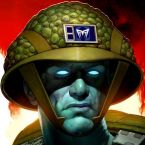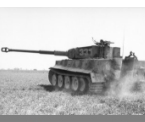GJK
Posts: 554
Joined: 7/17/2004
Status: offline

|
No, no understandings Hexagon 
I know that TOTH isn't ASL but it may be close enough to relate to you how ASL handles "casualties".
In ASL, you have what is roughly a "squad". At the start of the battle, they are all "Good Order" meaning that every member of the squad is ready, willing and able to contribute firepower when the time comes to shoot. Depending on the nationality and type of squad, it is rated for a combat effectiveness value (not an ASL term, but my own), meaning that they are given a number that would be their firepower strength total when fully "good order".
When a squad suffers adverse results by the way of combat, then the effectiveness of the squad may deteriorate meaning that the firepower strength number is lowered (roughly halved usually). This could of been caused not only by death, but by having squad members wounded or rolled up into a ball on the ground or just plain refusing to contribute. This is when a squad goes from 100% fully functioning to roughly half. Could ASL of gone 3/4, then 1/2, then 1/4? Sure, if you wanted to add another 5000 counters to the countermix. Does a computer game have that limitation? No but (again, not speaking for Peter!) I believe that Peter indicated that he wanted to pay homage to the boardgame roots and so it goes 100->50%(roughly)->eliminated (combat effective wise).
In ASL, support weapons add to the base firepower number of a squad that is manning it. That's simple enough. Machineguns and mortars (and other artillery guns) have a "rate of fire" meaning that those weapons were able to lay enough lead/shells on to a target within the approximated time that a turn is meant to represent that they have a *possibility* of continuing their firepower attack. What is cool about this if you think about it - an MG42 we know has a definitive rate of fire that I'm too lazy to go google right now. ASL doesn't represent *that* number; it represents that the machinegun *could* obtain that number (in ASL, if one of your dice are equal or lower than the ROF number you have opportunity to continue the attack) but also is the team/persona manning the gun in a position to actually carry that rate of fire? Did he hesitate for just a second, thus losing the rate of fire? In the abstraction of the terrain, did the target quickly dart behind something that is too small to represent on the mapboard and thus he let up off the trigger for a second, thus losing ROF? Yes, all very abstracted but wonderfully integrated in to that game system. Thus I'm most curious to see how Peter has put his ideas to use in a computer game that in at least a good bit of it, seems a lot like ASL. ;)
|
 Printable Version
Printable Version








 something like this for the game
something like this for the game 







 New Messages
New Messages No New Messages
No New Messages Hot Topic w/ New Messages
Hot Topic w/ New Messages Hot Topic w/o New Messages
Hot Topic w/o New Messages Locked w/ New Messages
Locked w/ New Messages Locked w/o New Messages
Locked w/o New Messages Post New Thread
Post New Thread